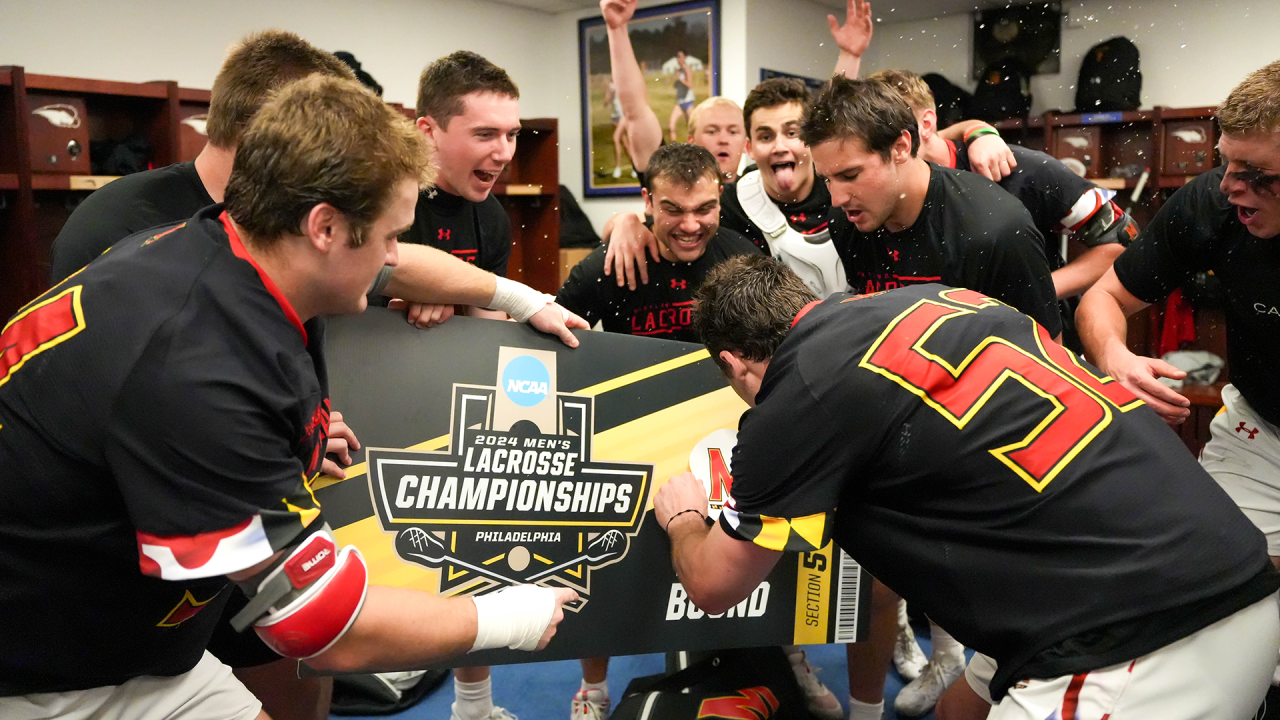The first three minutes of the second half proved indicative of what was to come. Wierman won the faceoff, setting up a possession that was ultimately extended when the Terps maintained control after a save. Duke eventually forced a turnover but botched a clear five seconds later, and Maltz scored to start the process of wearing down the Blue Devils’ defense.
Wierman went 11 of 14 on faceoffs in the second half and is 40 for 55 in two NCAA tournament games.
“Knowing that Luke just kept getting us possessions, it allowed our offense to just keep working and working,” Tillman said. “It put a lot of pressure on the other team’s defense.”
Still, it felt like a win when Duke scored next, a Williams goal with 2:40 left in the third quarter. Maryland was back to staring at a three-goal hole, even though it largely controlled the ball.
But then Jack Brennan scored just as the shot clock expired on the next possession, a call Danowski didn’t challenge because he didn’t want to burn a timeout in case he was wrong. That ignited a four-goal run for the Terps, who went ahead for the first time on Braden Erksa’s goal with 10:16 left that made it 10-9.
Duke would knot it two more times, including an impressive O’Neill goal to make it 11-11. Maltz deposited a slick Zach Whittier feed with 5:01 left to put the Terps ahead, then appeared to have added an insurance goal with 3:03 to go — only for officials to not rule a score.
Instead, the Maryland bench erupted with coaches trying to get the attention of officials as Duke tried to clear. That proved a bit too demonstrative for Duke’s staff which was less than enthused when the referees did stop play to re-examine the play.
“It was under four, so I can’t challenge it [by rule],” said Tillman, who nonetheless threw his red flag for good measure. “That’s where I was running over, and I was probably on the field, which is probably not a good thing. I was just trying to get their attention because I was like, ‘We need to review this — it’s under four, and it’s up to you.’”
Officials ultimately ruled Maltz’s shot, which hit the crossbar and bounced down, landed inside the white goal line.
“I hate replay,” Danowski said. “I don’t like it in any sport. We’re human beings, we’re playing a game and to me there’s no place for technology in our sport. But I get it. We have to keep up with the times. But their whole team jumped on the field, we’re playing the game. The referees didn’t signal; the one official was counting for the goal and had possession in the crease. The coach ran into one of our players. That’s not a great look, I think, for our sport.”
The expanded replay rule is in its first year, in large part because of a goal Duke scored to win its NCAA semifinal last year was not reviewable even though it appeared the Blue Devils’ Garrett Leadmon was in the crease.
Saturday’s reviewed goal made it 13-11, and Jack Koras’ empty-netter with 33.6 seconds left iced it for Maryland, which shot 7 of 12 in the fourth quarter. The Terps were 7 of 27 in the first 45 minutes.
This was a far different path to Memorial Day weekend than Maryland has taken in many of its recent trips. In four of its five semifinal appearances between 2016 and 2022, it was the tournament’s No. 1 seed. In the other, it was undefeated.
The road was far bumpier this time, and Maryland’s streak of 10-win seasons (excluding the pandemic-shortened 2020 year) appeared in serious peril when it lost 7-5 at Johns Hopkins to close the regular season and was blitzed 19-9 by Penn State two weeks later in the Big Ten semifinals in its most lopsided loss since 2006.
Instead, the Terps have now reached double-figure victories in every full season since 2003, and they improved to 10-1 in NCAA quarterfinals under Tillman. It is Maryland’s lowest-seeded semifinalist since 2014, when it was also a No. 7 seed, and it is also the first team with at least five regular-season losses to advance to the final weekend since North Carolina had six in 2016.
“With it your last go round, it just gives you a greater perspective for everything and just greater appreciation,” defenseman Ajax Zappittello said.
While Maryland savored what has become a program rarity — a surprise run to the final four — Duke was left to ponder on the missed opportunities of a lost season. The Blue Devils were unpredictable all year, often playing their best games right after some of their biggest clunkers.
That inconsistency was on display right to the final game, and Duke’s fine first half wasn’t enough to seal a trip to Philadelphia next weekend. A second half that saw the Blue Devils outshot 24-9 and beat 20-9 on ground balls helped spell the end of their season.
“They outplayed us in the goal,” Danowski said. “They outplayed us on the ground. They were the better team today, for sure.”



























































